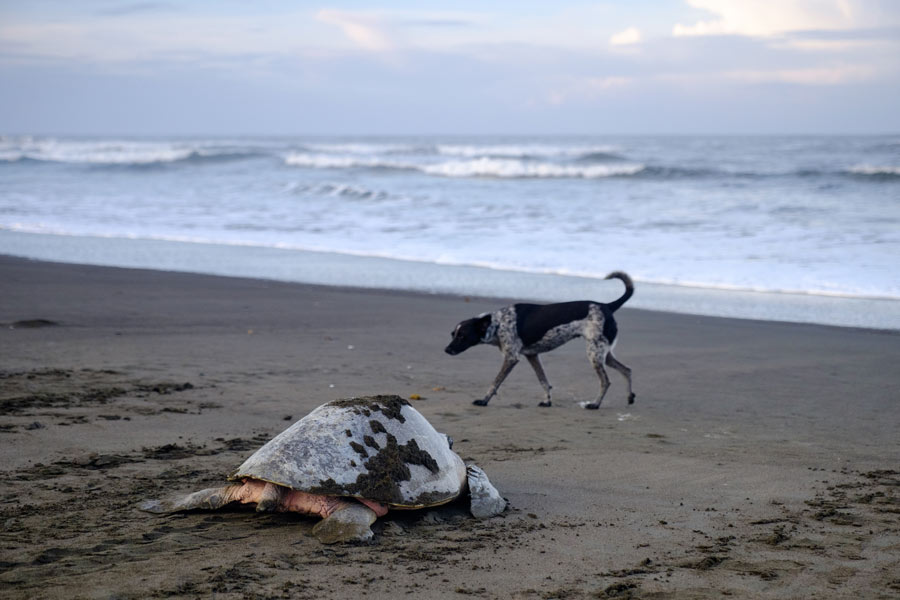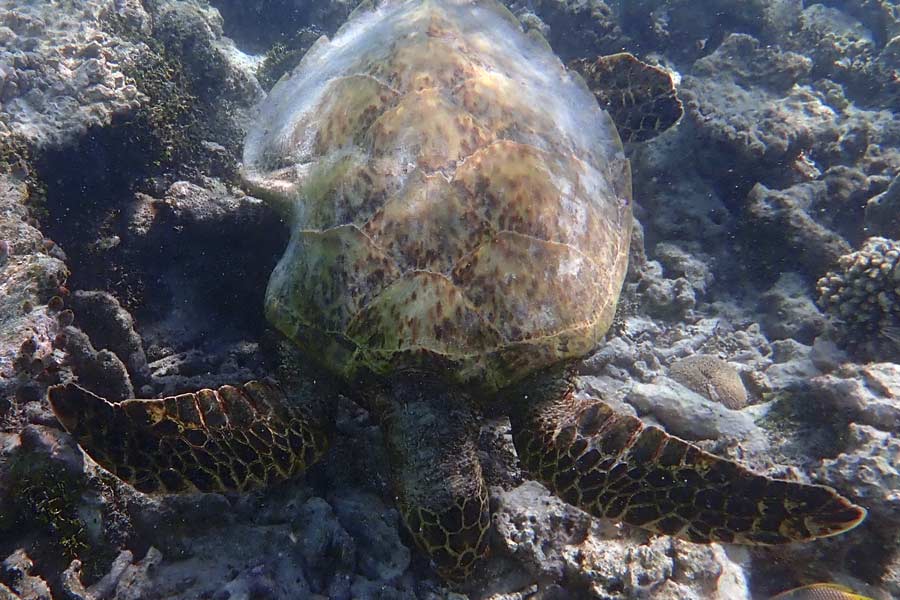Most sea turtles are predated during their hatchling stage. Their small size and limited swimming speed makes them easy targets for crabs, sea birds, and wild and domestic mammals on their way from their nest to the beach. Synchronized, mass hatching is their main strategy to avoid predators at this stage.
Once in the water, hatchlings are still highly predated by carnivorous fish, sea birds, and pretty much any animal with a big appetite and a big mouth!
As they grow older, their hard-shell provides them a shield from predator attacks, making them harder to get eaten. Sharks and killer whales are the main predator of adult sea turtles. Shark avoidance by sea turtles is hard to study in the wild, and most of what we know is directly observing how sea turtles behave around these predators. Encounters between sharks and turtles are difficult to observe, as shark populations are now severely depleted throughout the world.
However, some studies looking at turtle diving behavior suggest that U-shaped dives of green turtles might function as both resting dives and predator avoidance, while a slow approach to the surface to breathe, using a passive ascent under positive buoyancy, allows the turtles to scan the habitat for predators before surfacing. If an attack is imminent, sea turtles have been seen turning their shell to the shark’s mouth as it approaches, thus preventing the shark from biting their flippers or soft tissues, and swimming fast in the opposite direction.


References:
- Heithaus, M. R., Wirsing, A. J., Thomson, J. A., & Burkholder, D. A. (2008). A review of lethal and non-lethal effects of predators on adult marine turtles. Journal of Experimental Marine Biology and Ecology, 356(1-2), 43-51.

